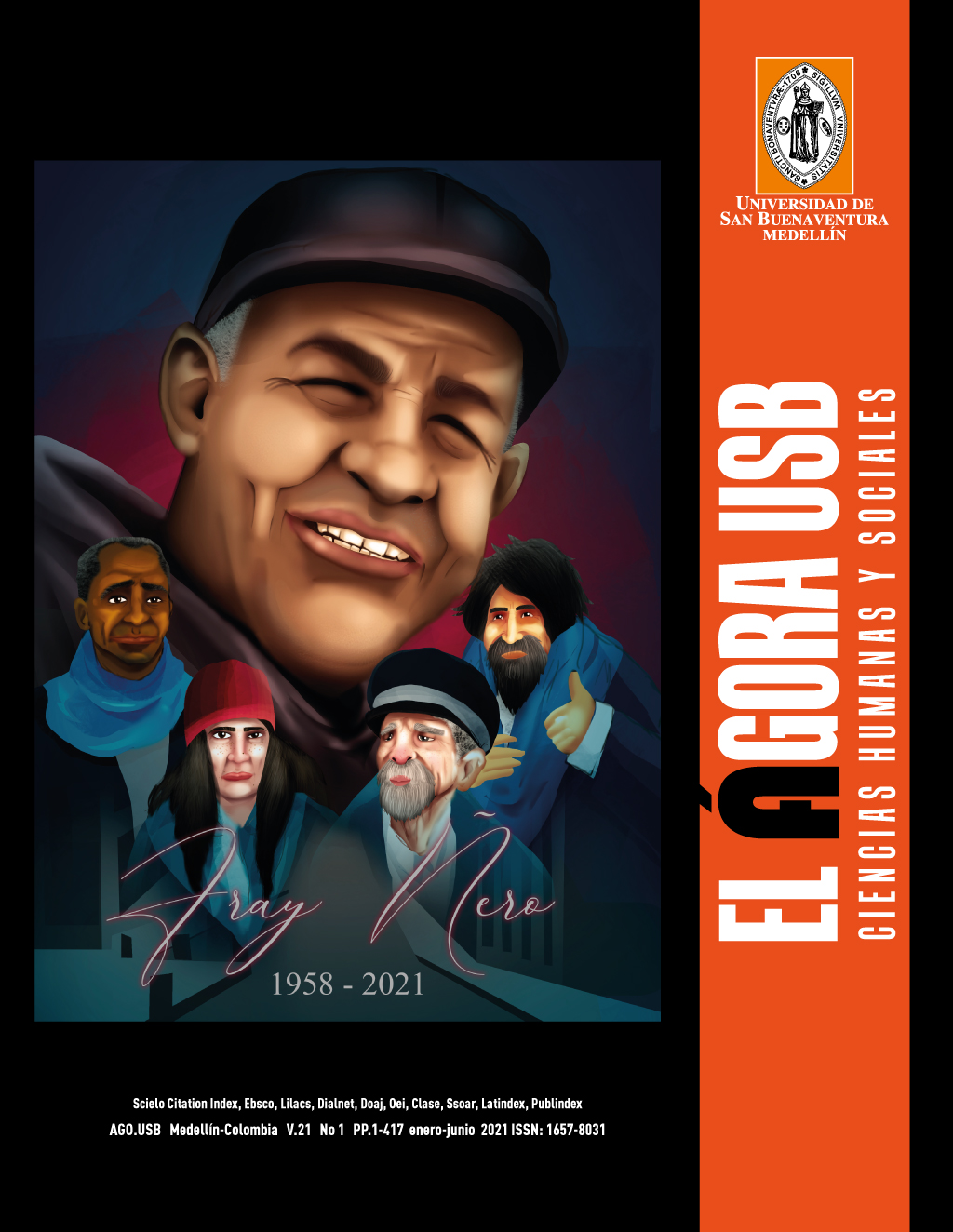Los autores y autoras también se adhieren a la licencia creative commons (4.0 https://creativecommons.org/licenses/by-nc-nd/4.0/deed.es)
Atribución - NoComercial - SinDerivar 4.0 Internacional (CC BY - NC - ND 4.0)
Resumen
La violencia en el noviazgo (VN) se considera un problema de salud pública por los efectos a nivel físico, emocional, social, además al ser una etapa previa a la conformación de familias, los eventos violentos serán posiblemente replicados y generen
violencia intrafamiliar. Se requiere de estrategias de intervención individual, familiar, comunitario y poblacional; surge entonces la necesidad de identificar si existen o no políticas públicas y legislación que aborden de manera directa la VN para el caso de colombiano.
Palabras Clave: Política gubernamental; legislación, Violencia en el Noviazgo.
Palabras clave:
Referencias
Teen Dating Abuse Prevention Program: Challenges and Successes Experienced by Expect Respect Facilitators. Journal of Adolescent Health, 56(2, Supplement 2), S40–S46. https://doi.org/10.1016/j.jadohealth.2014.06.021
Barrera Machado, D., & Villa Gómez, J. D. (2019). Barreras psicosociales para la paz y la reconciliación.
Agora U.S.B., 18(2), 459–478. https://doi.org/10.21500/16578031.3828
Bohnert, K. M., Walton, M. A., Ranney, M., Bonar, E. E., Blow, F. C., Zimmerman, M. A., … Cunningham, R.
M. (2015). Understanding the service needs of assault-injured, drug-using youth presenting for
care in an urban Emergency Department. Addictive Behaviors, 41, 97–105. https://doi.org/10.1016/j.addbeh.2014.09.019
Bolívar, Y., Martínez, JA., Rey, CA., Rey Anacona, C. A., Bolívar Suárez, Y., & Martínez Gómez, J. A. (2017).
Funcionalidad familiar, número de relaciones y maltrato en el noviazgo en estudiantes de secundaria
high school students. Psicología Desde El Caribe, 34(1), 91–100.
Breiding, MJ., Basile, KC., Smith, SG., Black, MC & Mahendra, R. (2015). Intimate Partner Violence Surveillance:
Uniform Definitions and Recommended Data Elements, Version 2.0. Atlanta (GA): National Center
for Injury Prevention and Control, Centers for Disease Control and Prevention.
Casey, E. A., Lindhorst, T., & Storer, H. L. (2017). The Situational-Cognitive Model of Adolescent Bystander
Behavior: Modeling Bystander Decision-Making in the Context of Bullying and Teen Dating Violence.
Psychology of Violence, 7(1), 33–44. https://doi.org/10.1037/vio0000033
De Moral, V., García, A., & Cuetos, G., Sirvent, C. (2017). Violencia en el noviazgo, dependencia emocional
y autoestima en adolescentes y jóvenes españoles. Revista Iberoamericana de Psicología y Salud, 8,
96–107. https://doi.org/10.23923/j.rips.2017.08.009
Foshee, V. A., Chang, L.-Y., Reyes, H. L. M., Chen, M. S., & Ennett, S. T. (2015). The Synergy of Family and
Neighborhood on Rural Dating Violence Victimization. American Journal of Preventive Medicine,
49(3), 483–491. https://doi.org/10.1016/j.amepre.2015.06.005
Foshee, V. A., Reyes, L. M., Agnew-Brune, C. B., Simon, T. R., Vagi, K. J., Lee, R. D., & Suchindran, C. (2014).
The effects of the evidence-based Safe Dates dating abuse prevention program on other youth
violence outcomes. Prevention Science : The Official Journal of the Society for Prevention Research,
15(6), 907–916. https://doi.org/10.1007/s11121-014-0472-4
Freedner, N., Freed, L. H., Yang, Y. W., Austin, S. B., & Sc, D. (2002). Dating Violence Among Gay , Lesbian ,
and Bisexual Adolescents : Results From a Community Survey, (02), 469–474.
Gover, A. R. (2004). Risky lifestyles and dating violence: A theoretical test of violent victimization. Journal
of Criminal Justice, 32(2), 171–180. https://doi.org/10.1016/j.jcrimjus.2003.12.007
Harford, T. C., Yi, H., & Grant, B. F. (2014). Associations between childhood abuse and interpersonal aggression
and suicide attempt among U.S. adults in a national study. Child Abuse & Neglect, 38(8),
1389–1398. https://doi.org/10.1016/j.chiabu.2014.02.011
Kann, L., McManus, T., Harris, W. A., Shanklin, S. L., Flint, K. H., Queen, B. & Lim, C. (2018). Youth Risk Behavior
Surveillance — United States , 2017. MMWR Surveill Summ, 67(8). https://doi.org/10.15585/
mmwr.ss6708a1
Rey-anacona, C. A. (2013). Prevalencia y tipos de maltrato en el noviazgo en adolescentes y adultos jóvenes
Prevalence and types of dating violence in adolescents and young adults, 31(5), 143–154.
Reyes, H. L. M., Foshee, V. A., Tharp, A. T., Ennett, S. T., & Bauer, D. J. (2015). Substance Use and Physical Dating
Violence: The Role of Contextual Moderators. American Journal of Preventive Medicine, 49(3),
467–475. https://doi.org/10.1016/j.amepre.2015.05.018
Sharron, C. (2005). Dating Violence Prevention in Middle School and High School Youth, 18(1), 2–9.
Sigel, E., Mattson, S., A., & M., M. C. (2019). Increased Violence Involvement and Other Behavioral and
Mental Health Factors Among Youth With Firearm Access. Journal of Adolescent Health. https://doi.org/10.1016/j.jadohealth.2019.01.028
Wincentak, K., Connolly, J., Card, N., Wincentak, K., Connolly, J., & Card, N. (2016). Teen Dating Violence :
A Meta-Analytic Review of Prevalence Rates.






















